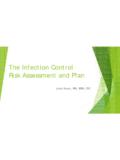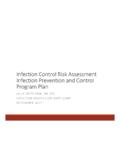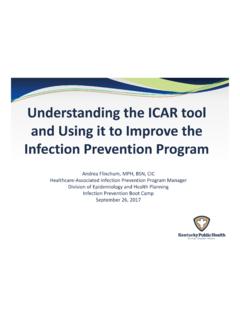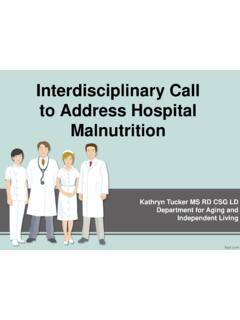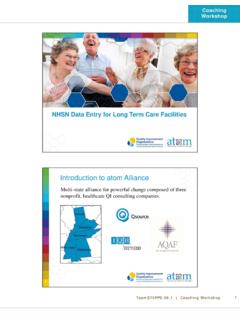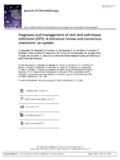Transcription of PowerPoint Presentation
1 10/12/20171 Basic MicrobiologyAssociate Director of Clinical Microbiology, UK HealthCareAssistant Professor, Department of Pathology and Laboratory MedicineUniversity of KentuckyDirector, Microbiology; Environmental Microbiology and PreparednessAssociate Director, Division of Laboratory ServicesKentucky Department for Public HealthVaneet Arora, MD MPH D(ABMM) FCCMO bjectives Identify normal flora, opportunistic and pathogenic organisms by body site Recognize empiric antimicrobial therapies based on microbe and body siteInfectious DiseaseInfluencing factors-How to decide empiric therapyAntimicrobial Patient related Age Adult vs Pediatric Body site Normally sterile Normal Commensals Immune status Immunocompetent Immunocompromised History Co-morbidities/ Family history Allergies Hepatic/Renal dysfunctionEnvironment related Setting Community vs Healthcare facility vs Long term care facility Outpatient vs Inpatient vs ICU Circulating organisms/strains Antibiograms Exposures Childcare/workplace
2 Catheter/IV line/ PICC line/prosthesis TravelOrganism related Type Bacteria Fungi Parasites (Protozoa/Helminths) Virus Others Pathogenicity Commensals Opportunistic Pathogenic Propensity to cause infection Common Uncommon/rare Virulence High/Moderate/Low Predilection for body site Localized Systemic Organ system Susceptibility patterns Sensitive/Resistant10/12/20172 Antimicrobial related Group Mechanism of action Spectrum Broad spectrum vs narrow spectrum Penetration Availability Pharmacy formularyAll factors are interrelated Site of infection type of organisms antibiotic that reaches the site Allergies what not to give second line antimicrobial Travel endemic organisms immune statusMore about BugsMicrobes
3 Outnumber our own cells by 10 to 1 Microbiome studies-just beginning to yield useful informationBacteria Oxygen requirement Obligate aerobes: Require O2 Microaerophilic: Require a lower oxygen concentration for growth Obligate anaerobes: Cannot grow in presence of O2 Facultative anaerobes: Grow with or without O2(switch between aerobic and anaerobic metabolism) Aerotolerant anaerobes: Ignore O2(only use anaerobic metabolism) Gram characteristic Gram Positive or Gram Negative Gram Variable/Gram neutral Cocci or rods10/12/20173 Gram stainingBacterial cell wall Gram positive Cocci Staphylococcus S. aureus MSSA/MRSA Coagulase negative staphylococci (CoNS) Streptococcus GAS/GBS S.
4 Pneumoniae Enterococci E. faecium / E. faecalis VRE10/12/20174 Gram Positive Rods Listeria Corynebacteria Diphtheroids Clostridium (Anaerobe spore forming) C. perfringens C. tetani C. difficile C botulinum Bacillis(Aerobe spore forming) B. anthracis B. cereus Gram Negative Rods Enterobacteriaceae E. coli Klebsiella Salmonella Shigella Yersinia Proteus Pseudomonads P. aeruginosa Burkholderia Stenotrophomonas Vibrios V. cholerae Non cholera vibrioColonized by Surfaces:a) Gastrointestinal Tractb) Upper Respiratory Tractc) Urogenital Tract (female)d) UrethraBody sites normally Respiratory (beyond epithelial barriers).
5 A) Bloodb) Cerebrospinal fluid (CSF)c) Pleural and pericardial fluidsNormal flora10/12/20175 Normal floraNormal floraNormal floraCommon BACTERIAL pathogensCommon BACTERIAL pathogensCommon BACTERIAL pathogens10/12/20176 Common BACTERIAL pathogensCommon BACTERIAL pathogensCommon BACTERIAL pathogensCommon VIRAL pathogensMore about Drugs10/12/2017710/12/20178 Classes of antibacterial agentsClasses of antibacterial agentsSpectrum of activityHospitalized Adults: Skin and Soft Tissue Infections: CellulitisHospitalized Adults: Septic Shock, Source Unknown: Hospital-Onset or Community Onset with Recent Healthcare Exposure10/12/20179 Hospitalized Adults: Respiratory Tract Infections: Hospital-Acquired PneumoniaHospitalized Adults: Respiratory Tract Infections: Community-Acquired PneumoniaHospitalized Adults: Intravascular Catheter-Related InfectionsHospitalized Adults: Healthcare-Associated Urinary Tract InfectionCommon denominator ?
6 Body site Organism Spectrum of Antimicrobial activityKey to appropriate therapy10/12/201710 Thank you
